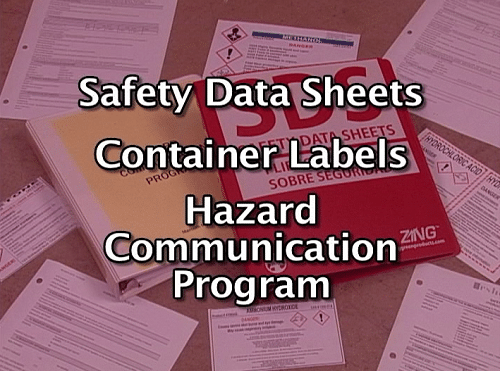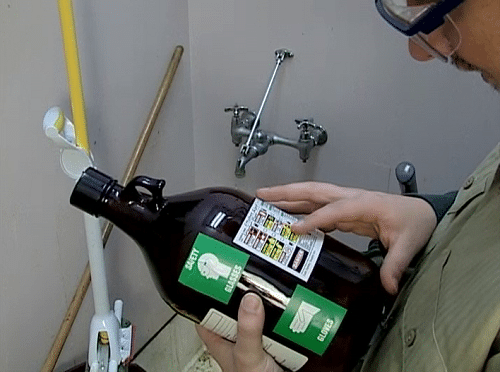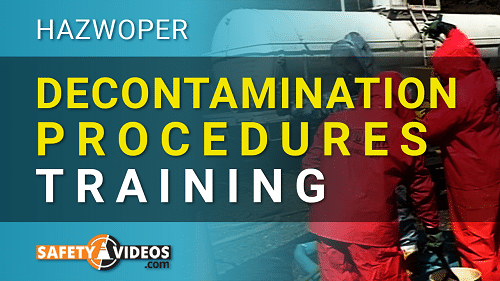HAZWOPER Chemical Hazards Training – [Complete Video Kit]
$239

When is comes to HAZWOPER, training your staff on Chemical Hazards is critically important. Giving them all of the available information required by OSHA including Hazard Communication Training (right to know), safety data sheet information, and the basics of container labels is not only required, but also goes a long way in keeping them safe at work. This chemical hazards training is part of our HAZWOPER series and will educate your staff on the many principles of chemical safety under the law.
This HAZWOPER Chemical Hazards Training Covers These Topics:
- What are the three different ways that chemical hazards are communicated to employees?
- Through the Safety Data Sheets for every chemical used at your facility
- Through the Container Labels for the products used and stored at your place of business
- Your businesses written “Hazard Communication Program”
- What is the primary source for information about a chemical product used in your facility? (That would be the SDS or Safety Data Sheet)
- What do the Safety Data Sheets include? (The names by which a chemical is known, the manufacturer, the types of hazards the chemical might pose, the techniques for cleaning up a spill with the chemical, and more)
- What do a chemical’s container label contain? (the potential health, fire and reactivity hazards and much more)
- What are the different ways a container label can present their information? (It can be written, it can uses shapes, numbers or letters as warnings, it can use symbols, pictograms, or pictures to represent hazards, etc)
- When it comes to chemicals what does “duration of exposure” mean? (that is the time you are exposed to a chemical)
- What are the “routes of entry” for chemicals or other substances to enter your body? (Skin contact, inhalation, and ingestion to name a few)
Additional Topics Covered in This HAZWOPER Chemical Training:
- What are some examples of how a chemical might be “inhaled?” (Chemical mists, fumes, vapors, gases, dusts, etc)
- What are the “Threshold Limit Value” or a “Permissible Exposure Limit” when it comes to chemicals and what does OSHA say about these?
- What are some examples of toxic materials in the workplace? (Pesticides, cleaners, solvents, gases, polymers, and more)
- What are some examples of dangerous acids found in many job sites? (Dyes, paints, petroleum products, batteries, etc)
- What are some examples of corrosive substances of irritants found on the job? (Ammonia, antifreeze, paint thinners, degreasers, acids, etc)
- What are some examples of flammables and combustibles found in many facilities? (Kerosene, gasoline, acetylene, toluene, etc)
- At what “flash point” is a chemical determined to be flammable? (liquids that have a flashpoint of less than 100 degrees Fahrenheit are considered flammable) A combustible liquid must have a flashpoint between 100 and 200 degrees.
- What are some examples of flammable gases? (Propane, butane, acetylene, methane, hydrogen, etc)
- How is a “suspected carcinogen” defined? (They are commonly believed to increase cancer risk although no direct link has been established) Examples of suspected carcinogens include PCB’s, carbon tetrachloride, and formaldehyde.
- What are some radiation hazards that might be present in the workplace? (X-rays, gamma rays, UV radiation, and infrared radiation)
- How to properly store chemicals and what things must be considered in their storage? (proper ventilation, stable shelving, safe access, proper lighting, proper spark or flame protection, and more)
- What to do in case of a chemical spill, what steps to take to clean the spill, and what special procedures should be considered?
- and much more…
If you are looking to get your employees HAZWOPER training on chemical hazards then this training product is for you. Available as an English or Spanish speaking DVD or USB Stick, the runtime on this training video is 21 minutes.
HAZWOPER Chemical Hazards Training Video – Full Length Preview:
5 reviews for HAZWOPER Chemical Hazards Training – [Complete Video Kit]
| 5 star | 40% | |
| 4 star | 60% | |
| 3 star | 0% | |
| 2 star | 0% | |
| 1 star | 0% |
![HAZWOPER Chemical Hazards Training - [Complete Video Kit]](https://www.safetyvideos.com/wp-content/uploads/2022/02/products-H21-2-150x150.png)







Good training and we are glad we got it
For us, this is the most important HAZWOPER topic given the things my crew deals with
Required training for us. Our employees thought it was good
Thumbs up
Great price for what you get